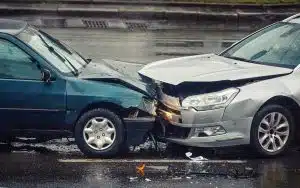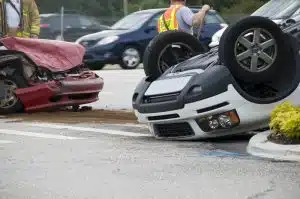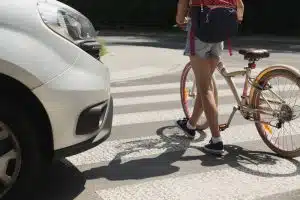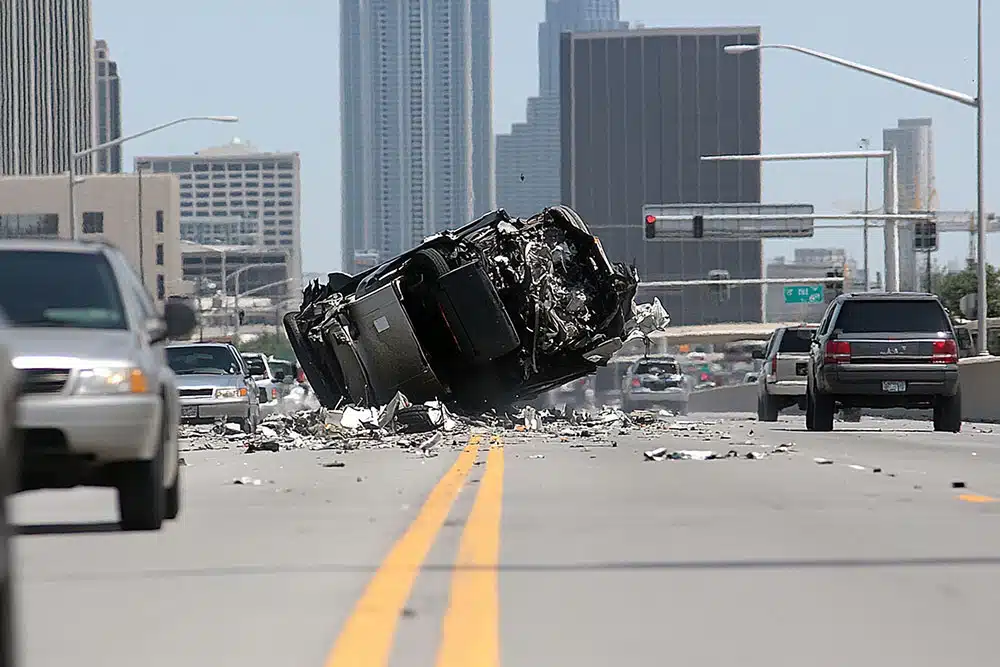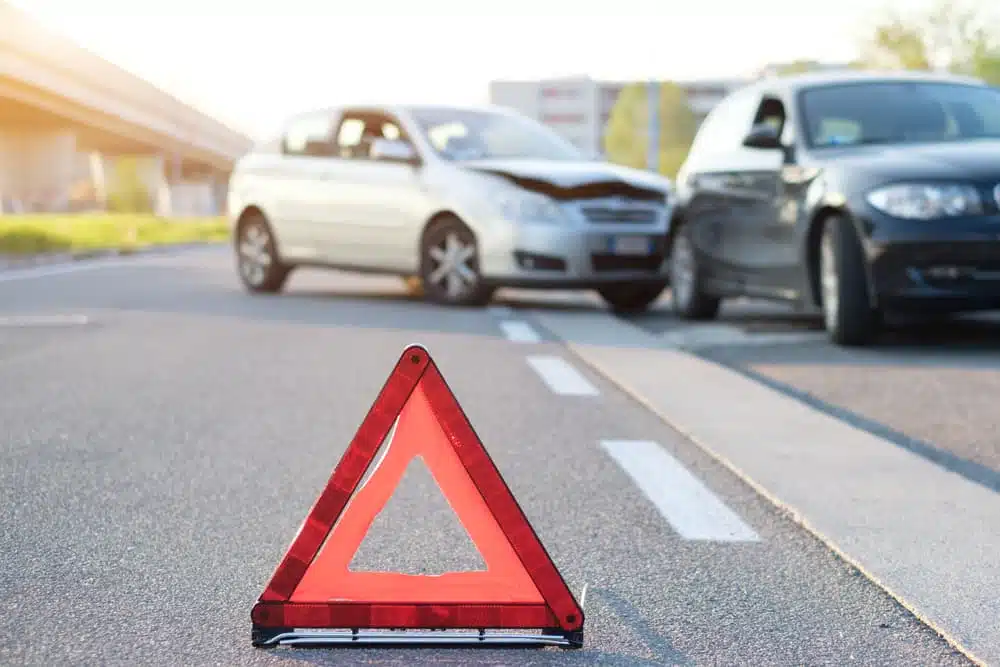
After a car accident, you may find yourself grappling with a whirlwind of emotions – shock, fear, anger, and a sense of vulnerability. The physical injuries sustained can cause severe pain, while the emotional toll can leave you feeling anxious, stressed, and uncertain about what lies ahead.
Amidst this turmoil, it’s crucial to understand that you’re not alone. Thousands of individuals find themselves in similar situations every year, forced to take on the complexities of a car accident that wasn’t their fault. While the road ahead may seem uncertain, there are resources and professionals available to guide you through this challenging time.
One of the most important steps is to educate yourself about the various types of car accidents that can occur. Having a comprehensive understanding of the different scenarios and potential causes can help you better comprehend the circumstances surrounding your accident and the legal implications involved. If you or a loved one has been in a collision, Contact an experienced car accident lawyer in your area.
In this guide, we’ll explore the different kinds of car accidents, the potential causes, and the steps you can take to protect your rights and seek the compensation you deserve.
8 Common Types of Car Accidents
1. Rear-End Collisions
Rear-end collisions are one of the most common types of car accidents, accounting for a significant portion of crashes on roads and highways. They occur when the front end of one vehicle collides with the rear end of another vehicle that is stopped or moving in the same direction.
The severity of these accidents can range from minor fender-benders to more severe collisions, depending on the speed and force of impact.
Rear-end collisions are often caused by driver inattention or distraction, such as using a cell phone, adjusting the radio, or conversing with passengers.
Other factors that can contribute to rear-end collisions include tailgating (following too closely), sudden braking by the lead vehicle, and poor visibility due to weather conditions or obstructions on the road.
The consequences of rear-end collisions can be severe, particularly for the occupants of the vehicle that was struck from behind. Common injuries associated with these accidents include whiplash (neck strain), back injuries, head trauma, and spinal cord injuries. In severe cases, rear-end collisions can even result in fatalities.
2. Head-On Collisions
Head-on collisions are among the most dangerous and potentially deadly types of car accidents. They occur when two vehicles traveling in opposite directions collide front-to-front, resulting in a combined force that can be devastating for both vehicles and their occupants.
Head-on collisions are often caused by driver errors, such as distracted driving, impaired driving (under the influence of alcohol or drugs), falling asleep at the wheel, or failing to yield the right-of-way.
Other factors that can contribute to head-on collisions include poor road design, inadequate signage, or obstructions on the road.
The immense force of impact in a head-on collision and combined speed of both vehicles can lead to catastrophic injuries or even fatalities. Common injuries associated with head-on collisions include traumatic brain injuries, spinal cord injuries, broken bones, internal bleeding, and organ damage.
3. Side-Impact Collisions (T-Bone Accidents)
Side-impact collisions, also known as T-bone accidents, occur when the front end of one vehicle strikes the side of another vehicle, typically at an intersection or during a lane change. These accidents are particularly dangerous because the side of a vehicle offers less protection than the front or rear, increasing the risk of severe injuries to occupants.
Side-impact collisions are commonly caused by failure to yield the right-of-way, running red lights or stop signs, and distracted driving. Other factors that can contribute to these accidents include poor visibility at intersections, obstructions on the road, and aggressive or reckless driving behavior.
The severity of injuries in side-impact collisions can be significant due to the lack of structural protection on the side of the vehicle. Common injuries include traumatic brain injuries, spinal cord injuries, broken bones, and internal injuries, particularly for occupants seated on the side of the vehicle that was struck.
4. Rollover Accidents
Rollover accidents occur when a vehicle tips over onto its side or roof, often as a result of a collision or sudden maneuver. These accidents are particularly common with top-heavy vehicles such as SUVs, pickup trucks, and vans, as their higher center of gravity makes them more prone to rolling over during certain driving scenarios.
Rollover accidents can be caused by a variety of factors, including excessive speed, overcorrecting or sudden steering maneuvers, hitting a curb or other object on the road, and tire blowouts. Poor vehicle design or defective components, such as faulty tires or suspension systems, can also contribute to rollover accidents.
The consequences of rollover accidents can be severe, as occupants can be partially or fully ejected from the vehicle, or crushed by the weight of the vehicle as it rolls over.
Common injuries associated with rollover accidents include traumatic brain injuries, spinal cord injuries, broken bones, and internal injuries. In some cases, rollover accidents can result in fatalities, particularly if occupants are not wearing seatbelts or are ejected from the vehicle.
5. Single-Vehicle Accidents
Single-vehicle accidents involve only one vehicle and occur when a driver loses control and collides with a stationary object, such as a tree, guardrail, or building. These accidents can happen for various reasons, including distracted driving, impaired driving, excessive speed, or poor road conditions.
Single-vehicle accidents can be particularly dangerous because there is no other vehicle to absorb or distribute the force of impact. The severity of injuries in these accidents can vary depending on the speed of the vehicle and the type of object it collides with.
Common causes of single-vehicle accidents include driver fatigue, poor visibility due to weather conditions, animal crossings, and mechanical failures such as tire blowouts or brake failures.
In some cases, intentional or reckless driving behavior, such as racing or dangerous maneuvers, can cause single-vehicle accidents.
The consequences of single-vehicle accidents can range from minor injuries to severe or even fatal injuries, particularly if the vehicle rolls over or the occupants are ejected from the vehicle.
6. Multi-Vehicle Pileups
Multi-vehicle pileups, also known as chain-reaction accidents, occur when three or more vehicles are involved in a collision, often on highways or in heavy traffic. These accidents can be particularly chaotic and complex, as they involve multiple vehicles and potentially numerous injuries or fatalities.
Sudden braking, poor visibility due to weather (e.g., fog, heavy rain, or snow), or a previous collision that causes other vehicles to collide in a chain reaction can cause multi-vehicle pileups.
Vehicles may strike each other from multiple directions, increasing the risk of severe injuries or fatalities. Additionally, the sheer number of vehicles involved can create challenges for emergency responders, as they need to navigate through the wreckage to provide assistance and medical care to those involved.
The severity of injuries in multi-vehicle pileups can vary greatly, depending on the number of vehicles involved, the speeds at which they were traveling, and the angles of impact. Common injuries associated with these accidents include traumatic brain injuries, spinal cord injuries, broken bones, and internal injuries.
7. Pedestrian and Bicycle Accidents
Pedestrian and bicycle accidents occur when a vehicle collides with a pedestrian or bicyclist who is on or near the roadway. Driver inattention, failure to yield the right-of-way or poor visibility due to environmental conditions or obstructions often caused these accidents.
Pedestrians and bicyclists are particularly vulnerable in these types of accidents due to their lack of physical protection compared to occupants of vehicles. Even at relatively low speeds, the force of impact can result in severe injuries or fatalities for the pedestrian or bicyclist.
Common causes of pedestrian and bicycle accidents include distracted driving, impaired driving, failure to obey traffic signals or signs, and poor lighting or visibility conditions. In some cases, poorly designed or maintained infrastructure, such as a lack of crosswalks or dedicated bike lanes, can also contribute to these accidents.
The consequences of pedestrian and bicycle accidents can be devastating, as the human body is no match for the weight and force of a moving vehicle. Common injuries associated with these accidents include traumatic brain injuries, spinal cord injuries, broken bones, internal injuries, and in severe cases, fatalities.
8. Blind Spot Accidents
Blind spot accidents occur when a driver fails to check their blind spots before changing lanes or merging, resulting in a collision with another vehicle. These accidents are often caused by driver error, distracted driving, or poor visibility conditions.
Like single-vehicle accidents, blind spot accidents can be particularly dangerous because there is no other vehicle to absorb or distribute the force of impact. The severity of injuries can vary depending on the speed of the vehicles involved and the angle of the collision.
Common causes of blind spot accidents include driver fatigue, poor visibility due to weather conditions, and intentional or reckless driving behaviors, such as excessive speeding or attempting dangerous maneuvers without properly checking blind spots.
The consequences of blind spot accidents can range from minor injuries to severe or even fatal injuries, particularly if the collision causes a vehicle to lose control, roll over, or occupants to be ejected from the vehicle. These accidents serve as a reminder for drivers to remain vigilant, check blind spots consistently, and exercise caution at all times to prevent potentially life-altering collisions.
Schedule Your Free Consultation With Car Accident Attorney Today
If you were involved in a car accident due to negligence, it’s essential to take the necessary steps to protect your rights and seek the compensation you deserve. This includes seeking medical attention, documenting the accident scene, gathering witness information, and contacting your insurance company.
It’s also important to keep in mind that the legal process can be complex and overwhelming, especially when dealing with injuries and emotional trauma. However, this is where an experienced attorney can be invaluable.
At Rothenberg Law Firm LLP, we have a team of dedicated and knowledgeable attorneys who have handled many car accident cases. They understand the challenges you’re facing and will fight tirelessly to ensure that you receive fair compensation for your injuries, lost wages, and other damages.
By working with the Rothenberg Law Firm LLP, you can have peace of mind knowing that your case is in capable hands. Our personal injury attorneys will guide you through the legal process, negotiate with insurance companies on your behalf, and represent you in court if necessary.
If you or a loved one has been involved in a car accident that wasn’t your fault, don’t hesitate to contact Rothenberg Law Firm LLP for your free consultation. Our compassionate and skilled attorneys will evaluate your case and provide you with the representation you need to seek the justice and compensation you deserve.


